In this Cultura Colectiva article, Alejandro López recounts a recently discovered aspect of Salvador Dalí’s art: the artist kept a personal diary for five years. To let you find out what it is all about, Ilaria has translated this interesting article for you. Happy reading!
The study of twentieth-century painting production will always make an obligatory stop at Dalí’s canvases, in which painting experimented with the pure psychic automatism that André Breton spoke of, the basic principle of the Surrealist movement that found in Dalí its greatest exponent. The Catalan painter developed an innate sense for forms, compositions laden with symbolism that he achieved through one of the most enviable techniques in the history of painting.
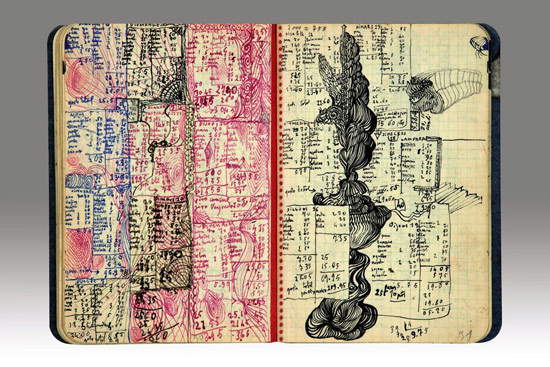 |
| Two pages from Salvador Dalí’s diary. |
Dalí’s works are exhibited all over the world and much of them are in private collections; however, a more intimate aspect of his life has recently been brought to light: it is a personal diary that the artist kept for five years at the height of his career. The diary consists of 42 pages that include 43 unpublished drawings, a multitude of accounts and notes of the painter’s daily life, as well as later studies with elements of The Great Masturbator (1929), a self-portrait and two portraits, one of his wife Gala and the other of his colleague and friend René Crevel.
The figure of a horse (one of his favorite animals besides ocelots and bulls) appears repeatedly in the notebook, a theme represented in many of his works. It was presumably kept by Dalí from 1930 to 1935 and contains a number of sketches depicting these animals, early drawings for his study of equine physiognomy, which during this period he depicted in works such as Sleeping Man, Horse, Lion Invisible (1930) and later in The Horseman of Death (1934) or in the famous Temptation of St. Anthony (1946).
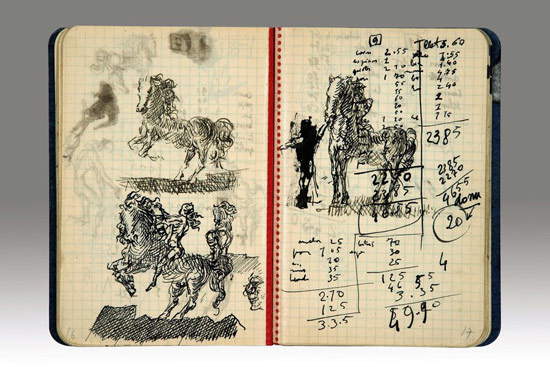 |
| Horses from the diary of Salvador Dalí |
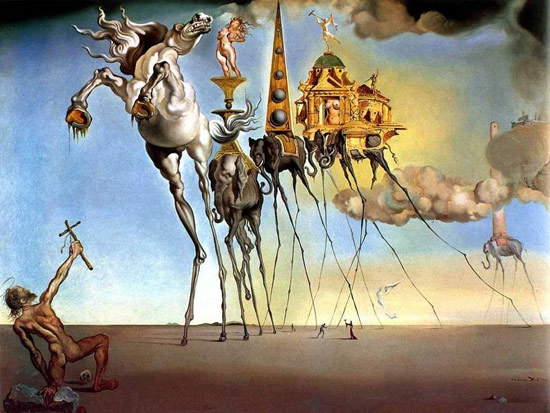 |
| Salvador Dalí, Temptation of St . Anthony (1946; oil on canvas, 90 x 119.5 cm; Brussels, Musées royaux des beaux-arts de Belgique) |
Another recurring element in his notes is the female body. Dalí drew in pen female bodies in various positions similar to those he depicted in Dream caused by the flight of a bee around a pomegranate a moment before awakening (1944) and in the various works inspired by his muse, Gala, such as My Naked Wife watches her body become steps, three vertebrae of a column, sky and architecture (1945) or in the late work The Hand of Dalí removes the cloud-shaped golden fleece to show Gala the golden aurora, completely naked, far behind the sun (1977), both with naked women’s bodies that coincide with his wife’s physiognomy.
 |
| Bodies from the Diary of Salvador Dalí |
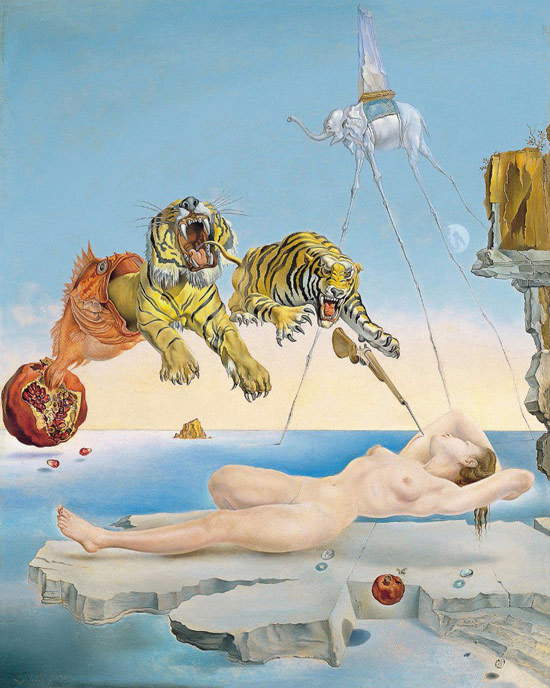 |
| Salvador Dalí, Dream caused by the flight of a bee around a pomegranate a moment before awakening (1944; oil on canvas, 51 x 41 cm; Madrid, Museo Thyssen-Bornemisza) |
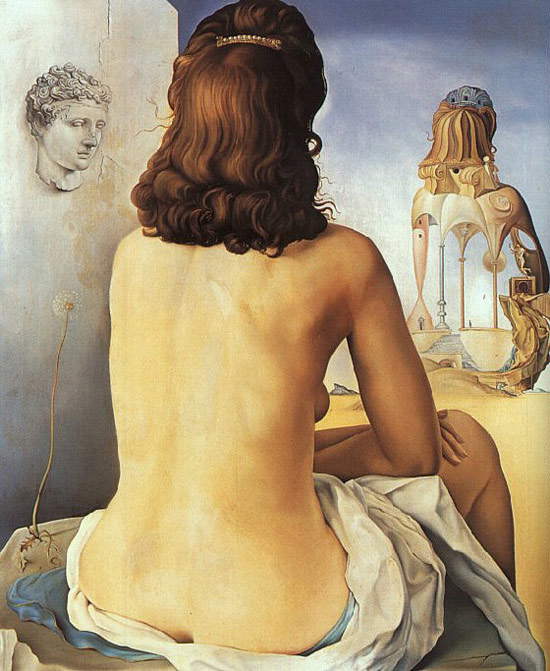 |
| Salvador Dalí, My Naked Wife watches her body become steps, three vertebrae of a column, sky and architecture (1945; oil on panel, 61 x 52 cm; New York, José Mugrabi Collection) |
Dalí’s diaries provoke a desire to peer, or at least peek, inside one of the most creative minds of the last century. The Catalan painter, who described Mexico as a place more surreal than his works (in Mexico he was only able to feel affection for his ocelot Babou), spent his entire life on the thin line that separates madness from genius, the transcendent from the absurd, and the authentic from the false.
The sketches and notes in his diary not only show Dalí’s artistic output but also tell the story of the man in front of the canvas, the complicated thinking that led him to an extravagant life, but always consistent with his principles. The diary was auctioned at Sotheby’s in late April and then sold for 91,800 euros to an art collector whose identity has remained confidential.
Warning: the translation into English of the original Italian article was created using automatic tools. We undertake to review all articles, but we do not guarantee the total absence of inaccuracies in the translation due to the program. You can find the original by clicking on the ITA button. If you find any mistake,please contact us.